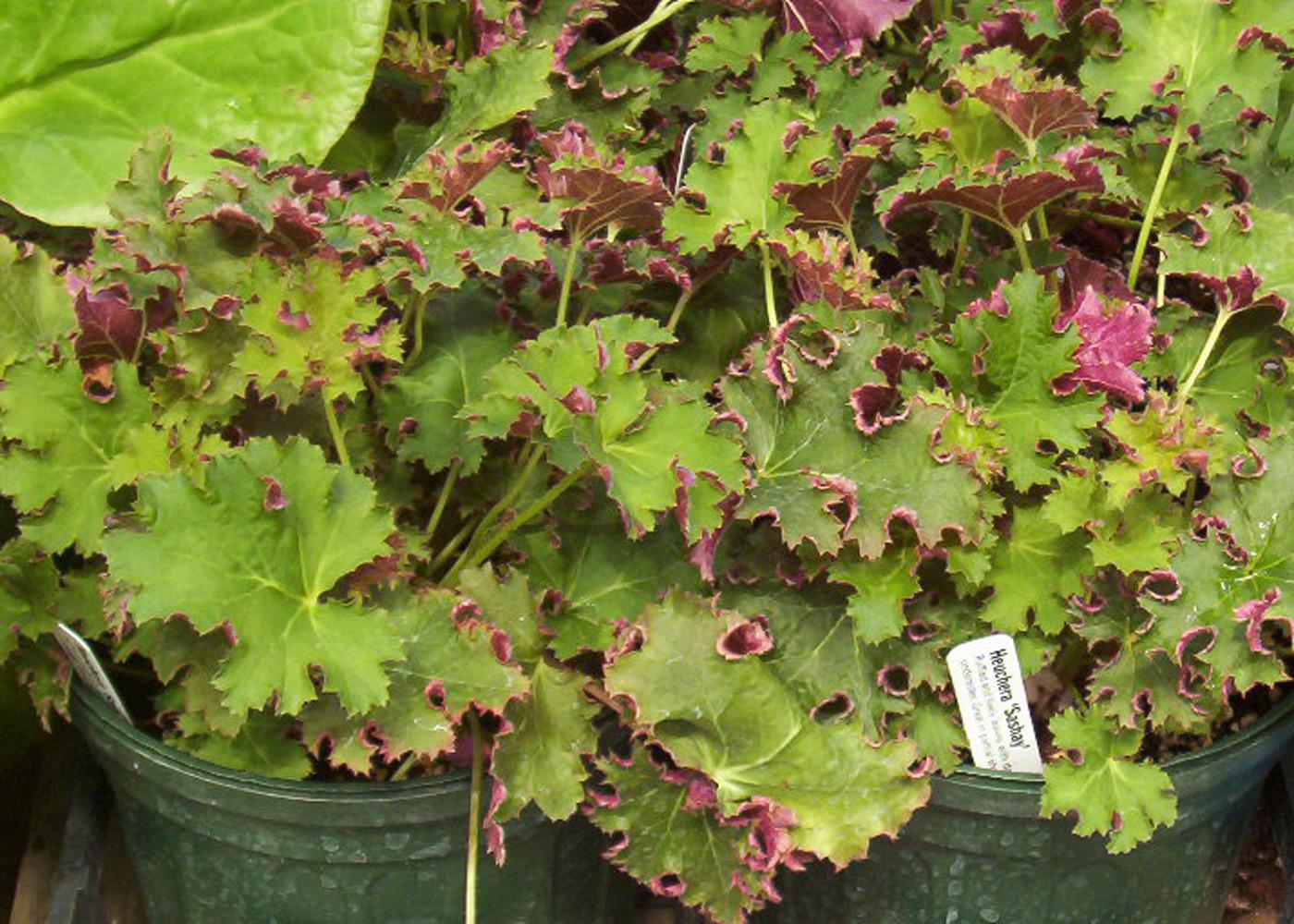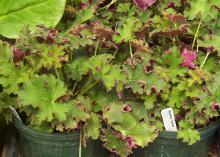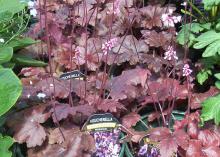Information Possibly Outdated
The information presented on this page was originally released on May 7, 2012. It may not be outdated, but please search our site for more current information. If you plan to quote or reference this information in a publication, please check with the Extension specialist or author before proceeding.
Coral bells bring color and texture to gardens
Coral bells are perpetual favorites, and their colorful foliage can add interest and texture to any garden.
The first coral bells had green foliage, but these days, green foliage selections can be hard to find. New selections have purple, red, and white marbling and different colored venation. You will often see foliage colors of bright gold, orange and brown. Still others have different colors on top and bottom, so the colors flash when the wind blows.
Coral bells also put their texture on display. Some have ruffled margins, some have deep cuts in the foliage, and others have smooth margins.
Typically coral bells grow to 1 to 3 feet tall and up to 2 feet wide. However, smaller, more compact selections are available. Coral bells can have some of the darkest foliage around, ranging from deep burgundy and dark purple to black. Many are seed propagated.
Coral bells don’t have many pests. Perhaps the biggest problem they have is leaf scorching, especially if they are not planted in partial shade.
Coral bells get their name from the nodding flower stems that are produced in the spring. Deadhead expired blooms to encourage repeat blooming through the summer.
Because they are an evergreen perennial, coral bells have multi-season interest. Prune the foliage in early spring to clear the way for the new season’s growth. Pruning will help maintain the plant’s shape and keep the center tight. Divide your plants every three to four years, and you’ll have new plants to decorate with and share with friends.
Coral bells are not hard to grow if you follow a few tips for maintaining healthy clumps.
Plant your coral bells in a spot that gets a few hours of afternoon shade. Some shade is especially important for the foliage varieties. Selections with showy flowers benefit from more sun exposure and have stronger flowering stems.
Well-drained soil with a lot of compost mixed in is a must. Plant the crown a little higher than the surrounding grade to increase drainage and help prevent the crown from rotting. Add compost or a general garden fertilizer once in the spring to meet the plant’s nutritional needs. Provide coral bells with 2 to 3 inches of mulch to help keep the soil cool.
Although coral bells are evergreen, the winter months in Mississippi can leave the foliage looking raggedy. Prune away old foliage in the spring, being careful not to damage the crown. If you prune carefully, the new growth will come in strong. Later in the summer, remove spent flower stems to keep your coral bells looking neat and trim.
When you are ready to divide the plant, in either the spring or fall, carefully dig it up and break off the pieces where you see the small leaves coming out. Dip these pieces in rooting hormone and push them into the soil in new areas of the garden.
Coral bells make a great partner in combination plantings. Combine coral bells, spiderwort and veronica for good spring and summer flowering. Or for shade foliage, try coral bells, hosta and Japanese painted fern.
With the proper care and planting location, you can enjoy coral bells in your landscape for a long time.









